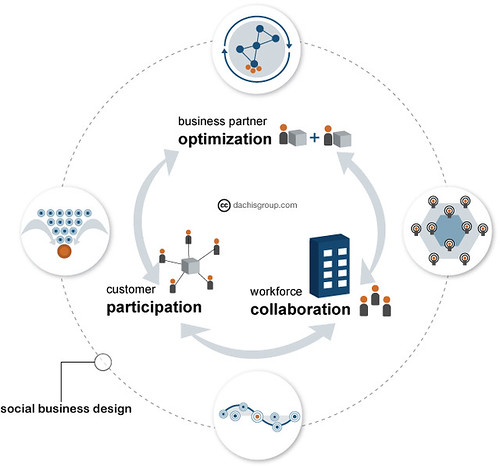Only brainwashing has such negative connotations. Abandon those. The part I’m thinking about, the systematic methodology to get people to change their attitudes to drastically different ones, is not necessarily evil.
I know it seems strong - or wrong - to compare culture change to brainwashing, but building the new collaborative culture we’re talking about takes a lot of work. Unless, of course you’re just asking people to use social technologies and not genuinely change their ways, their attitudes, their business processes.
Most people aren’t-- they’re asking how we get hierarchical, silo-d, and competitive cultures to change to more democratic, participative, or hiveminded ones.
Enter “thought reform” methodology from reputable psychologists like Edgar Schein or Robert Jay Lifton, as deduced from extreme situations like American POWs in the Korean war. Of course, it requires slight adaptation to be more relevant to an organizational setting.
The POW brainwashing tactics were complex, but there are three major phases that are typically identified. Keep in mind, in the case of the POWs, which I don’t for a second endorse a direct analog to employees of corporate life, it was all about breaking down identity through abuse, starvation, isolation, sleep deprivation, etc.. Rather than breaking down who you are, I’ve adapted the process to be about how you work. I’ve also removed the need for undue conditions (managers take note).
A loose adaptation: simplified steps to "induce" culture change:
Break it down.
Provide a glimmer of hope.
Rebuild the new, social employee.
Again, drastically oversimplified, but in my mind, remarkably instructive when thinking about genuine change.
- While you don’t need to begin by attacking “wrong,” or unsocial ways, question current definitions and ways of working. Get all assumptions and beliefs on the table. In the coercive settings, here's where captors figure out what they're working with and build a foundation for change. Use caution here-- the emphasis is on questioning old ways, not mandating new ones. The anxiety you can provoke here could backfire if you aren't supportive and consistent.
Provide a glimmer of hope.
- As people, we’re full of biases that limit us to seeing and using things in the usual, traditional ways. Offer alternatives. Start with seemingly innocent pilots-- nothing back-breaking. Talk about the purpose behind the ways of old so you can rebuild strategically and not just address features. One of the more effective tactics used in POW coercion was to put newbies in groups with others who were more advanced, or further down the road in the desired change. They offered a comfortable model of tactical next steps.
Rebuild the new, social employee.
- With a blank slate to work from, here’s where the vision comes in. The key here is introducing a new belief system, not just a new feature set. In coercive version, here’s where "the right way" is introduced, and is radically different from ways of old [Note: here's where it's introduced, not in stage 1, but in the final stage]. The trick here is to provide a completely new framework. Recall how easy it is to fall back on what we know; here, you have to go out of your way to offer up new ways to think about things.
Again, drastically oversimplified, but in my mind, remarkably instructive when thinking about genuine change.
